Thirty-two degrees Fahrenheit and solid rain makes for a dreary day outside, but it’s hygge in my parlor, with a fire in the wood stove and chili on the kitchen stove, and lots of wildflower pictures on my computer. Here are some of the summer-blooming ones.
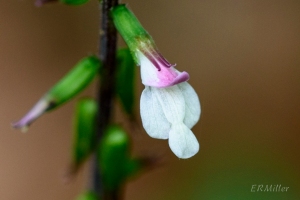 Phryma leptostachya (lopseed; Phrymaceae)
Phryma leptostachya (lopseed; Phrymaceae)
This is a very small flower – you need good eyesight or a hand lens to make out the colored structures on the upper petal – but the plants are fairly large, about two feel tall with large leaves and a long terminal flower spike (sometimes there are a few axillary spikes as well). The flowers open for a short period of time in mid July.
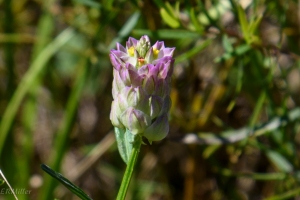 Polygala sanguinea (field milkwort, purple milkwort; Polygalaceae)
Polygala sanguinea (field milkwort, purple milkwort; Polygalaceae)
Most of the Maryland Biodiversity Project records for this annual species are in the piedmont and northern coastal plain. The plants seem to like dry, sunny conditions, and bloom in mid summer.
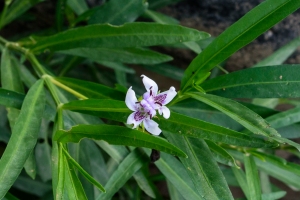 Justicia americana (water-willow; Acanthaceae)
Justicia americana (water-willow; Acanthaceae)
This aquatic plant grows in large masses in shallow waters. When the river level drops in mid summer you can get close enough to see the flowers in detail. Individual flowers last only a few days, but overall a colony will flower for several months.
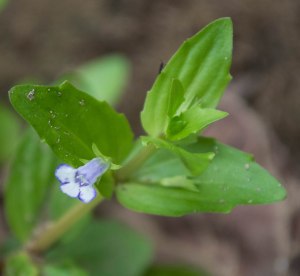 Lindernia dubia (false pimpernel; Linderniaceae, formerly Scrophulariaceae)
Lindernia dubia (false pimpernel; Linderniaceae, formerly Scrophulariaceae)
A tiny little flower on low-growing, weedy-looking plants that are mudflat ephemerals, emerging from river banks when the water level gets low at the height of summer. You have to be a real botanerd to appreciate these.

Liparis liliifolia (purple twayblade; Orchidaceae)
<—cleeck-ay moi!
Ah, orchids. Infinitely fascinating. This one blooms in late spring, in undisturbed forest areas. It’s listed S2S3 (state rare) in Maryland. If you find a stand be sure to report it to the Maryland Biodiversity Project!
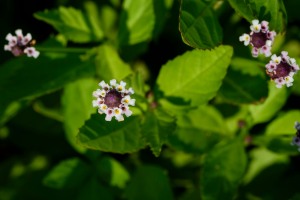
Phyla lanceolata (fogfruit; Verbenaceae)
This sprawling perennial forms large stands in the very wet soils next to streams and ponds. As with everything else on this page, you have to get up-close to really see and appreciate how complex the colors are. Colonies will have a few flowers (or a lot of flowers) open for most of early to mid summer.
 Pycnanthemum tenuifolium (narrow-leaved mountain mint; Lamiaceae)
Pycnanthemum tenuifolium (narrow-leaved mountain mint; Lamiaceae)
The one area where I find these tall, slender plants growing is rocky and sunny and close to the Potomac, so it seems that there is always a tiny breeze moving the plants around. One year the stand was mowed down, presumably by people clearing the trail. Another year it was flooded out. One of these years I will finally get a crystal-clear closeup of the tiny flowers.






















